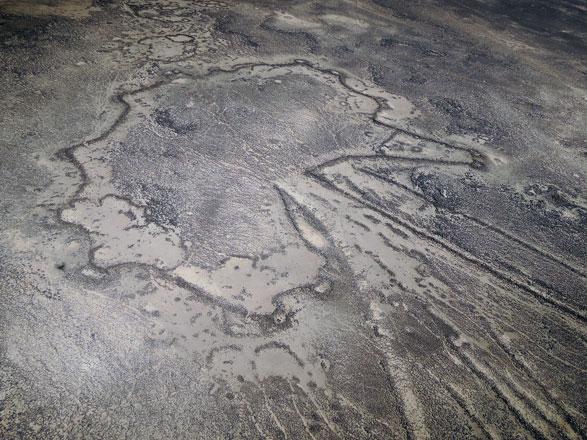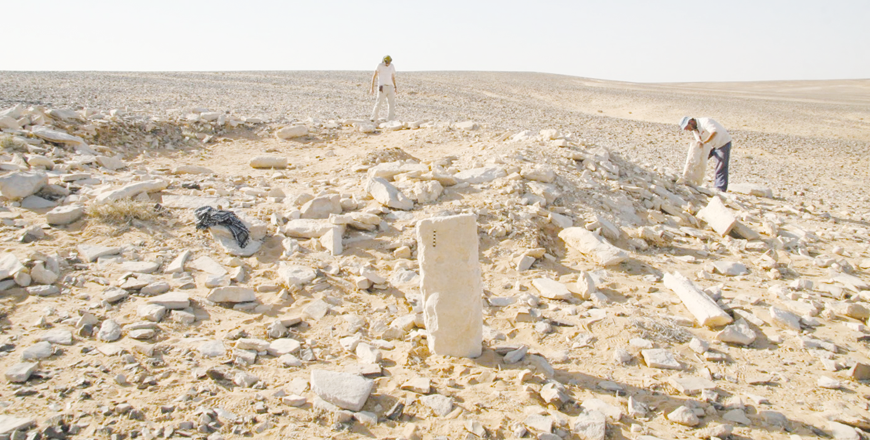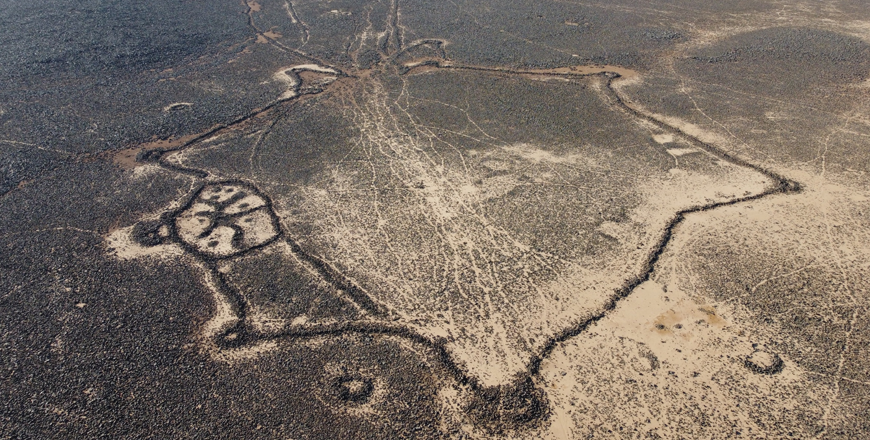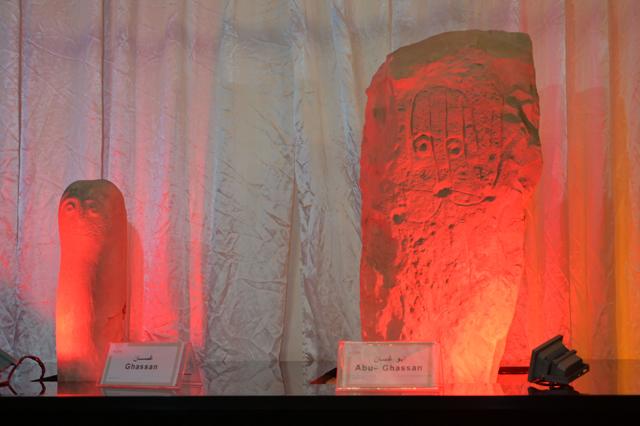You are here
French anthropologist seeks to decipher ancient hunting techniques
By Saeb Rawashdeh - Jan 24,2018 - Last updated at Jan 24,2018

An areal view of a desert kite being studied by the Globalkites team (Photo courtesy of E.Reganon)
AMMAN — Desert kites, constructions which aim to trap game animals, are scattered all over the Middle East and has been the subject of study of a group of researchers between 2015 and 2016, according to a French resercher.
A team of scholars came to Harrat Al Shaam, in northeastern Jordan, to learn more about desert kites, said Remy Crassard, a French anthropologist, noting "in 2015 and 2016, the ‘Globalkites’ team decided to do intensive archaeological work in the ‘Black Desert’, or Harrat Al Shaam”.
The team first worked around As Safawi, and then closer to Ar Ruwayshed, he said, noting “our aim is to understand what were these gigantic ‘desert kites’ structures that are visible in satellite images".
"The kites are made of long walls [up to over 6 kilometres] that lead to an enclosure with little rooms all around it,” Crassard explained.
“Thanks to our extensive surveys and the various excavations in many different structure types, we are now able to date these structures and know why they were built,” the scholar continued.
The material found in soundings (test excavations) is very poor, if not absent in most of the cases, the French anthropologist said, adding that the material does not help in dating the use of the kites, but the time when the holes were filled in.
“We then had to find other way to date these archaeological structures, namely by using physical and chemical methods, such as the radiocarbon dating and other very specialised techniques,” Crassard explained.
In addition, results of sampling of anthropogenic and natural sediments inside kites enable scholars to date the sediment itself and not only the organic material from the excavations, he continued.
“This is great because it gives us a date for the use of these structures,” the researcher underscored.
Moreover, because of the high number of excavations conducted by the team, scholars are able to conclude that these kites were hunting traps, dating as far as the Neolithic period.
“This is interesting,” Crassard elaborated, noting that “because human groups were still hunting at a wide scale at a time when they were supposed to be much more oriented towards a sedentary way of life, with domesticated animals, in the famous ‘Fertile Crescent’".
These traps are huge and very numerous, according to the scholar, who stressed that in Jordan only, 1,274 kites were recorded. "And we recorded more than 4,500 others in neighbouring countries, but also in Armenia and as far as Kazakhstan,” Crassard highlighted
"So we can really call this a 'kite phenomenon' that we still need to explain more in details," he pointed out.
Related Articles
AMMAN — Al Jafr is a town located near Maan, in the south-eastern region of Jordan, within the area of Jibal Khashabiyeh.
AMMAN — Desert kites were used for hunting of game animals during the Neolithic period as well as later periods and they were discovered not
AMMAN — Minister of Tourism and Antiquities Nayef Al Fayez on Tuesday announced the discovery of a "unique ritual installation" dedicated to
















